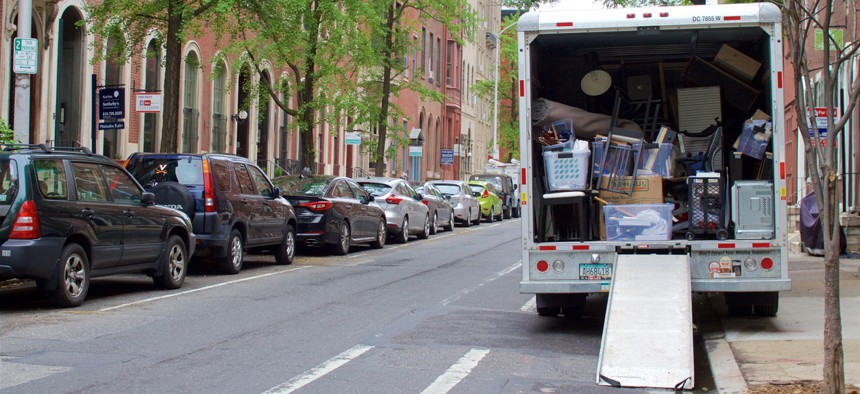Why are so Many Workers Moving Across State Lines?

istock.com/JanaShea
In a report, researchers say people want to live in less populated areas with lower housing costs, potentially spreading higher-income families across the U.S.
Interstate moves during the pandemic were more likely to be driven by desire to be closer to family and the possibility of continued remote work than by fears related to Covid-19, according to a recent paper by researchers from Vanderbilt University and the Georgia Institute of Technology.
“We find households are moving much less for new jobs or company transfers and relatively more for family, and lifestyle,” says the paper, titled From L.A. to Boise: How Migration Has Changed During the COVID-19 Pandemic. “These results provide prima facie evidence that the relative importance of labor considerations for migration have diminished with the onset of the pandemic.”
To study the issue, researchers analyzed moving data provided by UniGroup C.A., a moving conglomerate that includes the brands United Van Lines and MayFlower. The data, collected from January 2017 through February 2021, includes roughly 300,000 domestic, nonmilitary moves across state lines, with detailed information on destination, origin, dates and freight weight. A third of those families completed additional questionnaires on their reasons for moving and demographic data, the report said.
With the widespread expectation that remote work will become a mainstay in the future—several large companies have already announced plans to continue the practice after the pandemic—the importance of on-site work dwindled in people’s decision-making process before and during moves, researchers found.
“We find households are moving away relatively more from areas with greater remote work jobs, more stringent pandemic-related restrictions, and areas with higher rent-levels during the pandemic compared to normal times,” they wrote. “Households are moving to areas with fewer cases, less restrictions, lower density, and lower rent relatively more.”
States with the highest numbers of residents leaving included California, Washington, Illinois, New York, New Jersey, Colorado and Arizona. Popular destinations included Texas, Florida, Montana, Idaho, Utah, Tennessee, Maine, and North and South Carolina.
For moves between states specifically, people moved to less populated and less expensive areas in greater numbers than before the pandemic. Those people also tended to leave denser places while holding jobs that allowed them to work remotely, a trend that is likely to continue, researchers noted, as the proportion of households citing Covid-19 as a motivation for moving has remained consistent—between 10% and 20%—for six months, regardless of case counts.
“Taken together, our results document a broad shift in the motivations for moving and the types of areas people are moving from and to during the pandemic,” they wrote.
Socioeconomic Migratory Patterns
The overall inequities in the pandemic’s reach extend to these migratory patterns as well, the report said. Three-fourths of people who said they were able to work remotely are part of households making at least $100,000 per year, “despite representing only 43% of the sample of movers,” according to the data.
By contrast, “lower-income households are continuing to move for job-related reasons” at levels similar to those before the pandemic “and are less likely to move for reasons such as retirement, health or lifestyle.”
In addition to cost of living and population density, the pandemic has prompted people to prioritize other amenities when considering places to live. Socializing, for example, has largely shifted to private homes and outdoor locations, increasing “the value of a good climate, access to outdoor recreation, and also the amount of space in one’s home.” Those considerations were most prominent for higher-income households with children, who are also most likely to expect “the high costs of indoor socialization and/or the ability to remote work to persist.”
“These results mimic broader trends on the impact of the pandemic, where economically disadvantaged households are more negatively affected,” researchers said.
The report supports previous research suggesting that the pandemic is likely to permanently alter traditional work patterns, including an earlier study predicting “that large-scale adoption of remote work will shift migration patterns.”
Should they continue, those migration patterns will have widespread impacts, researchers predicted. Income levels will likely become staggered across more areas as higher-income families continue to flee large cities, and housing inventory is likely to decrease while real estate prices push higher. Other effects are likely as well, they concluded.
“Beyond income dispersion and real estate, the migration patterns we document are likely to inform our understanding of the structure of cities and urban economics on other dimensions as well,” they wrote.
Kate Elizabeth Queram is a senior reporter for Route Fifty and is based in Washington, D.C.
NEXT STORY: Covid-19 Nomads Heed Pandemic Call of the Road





